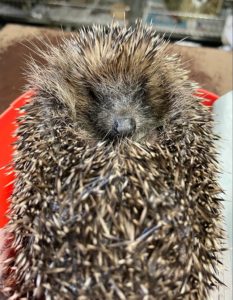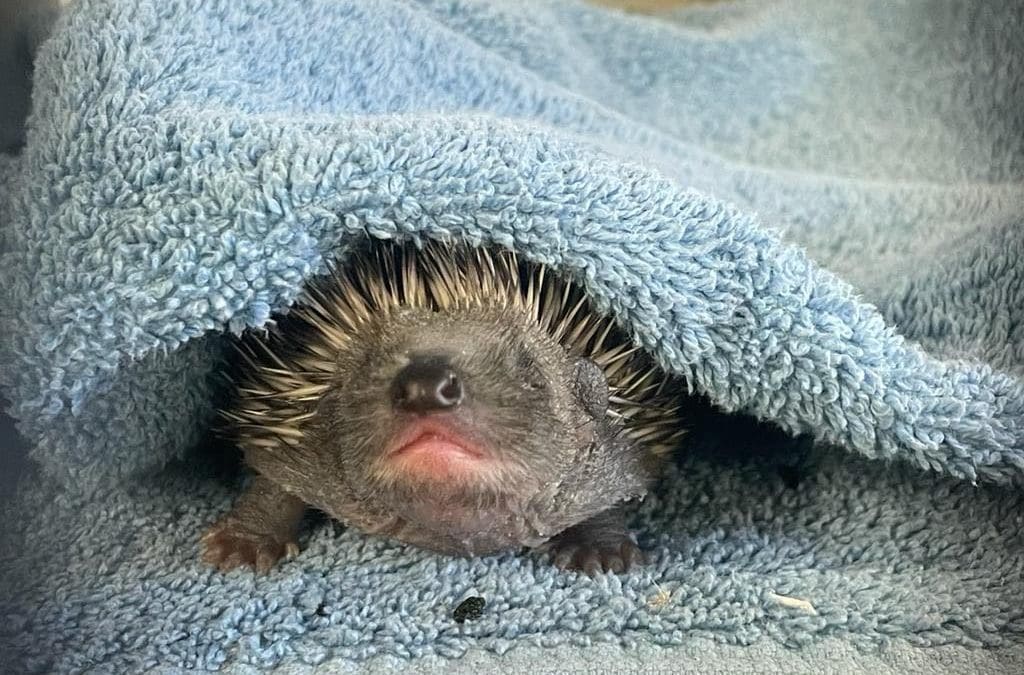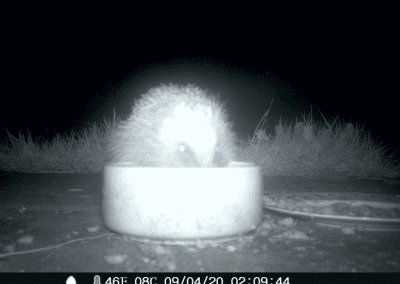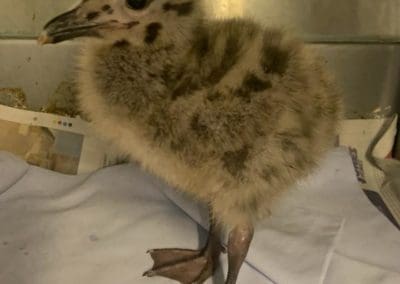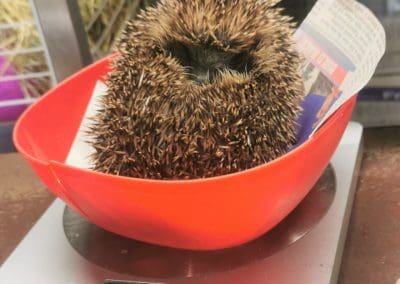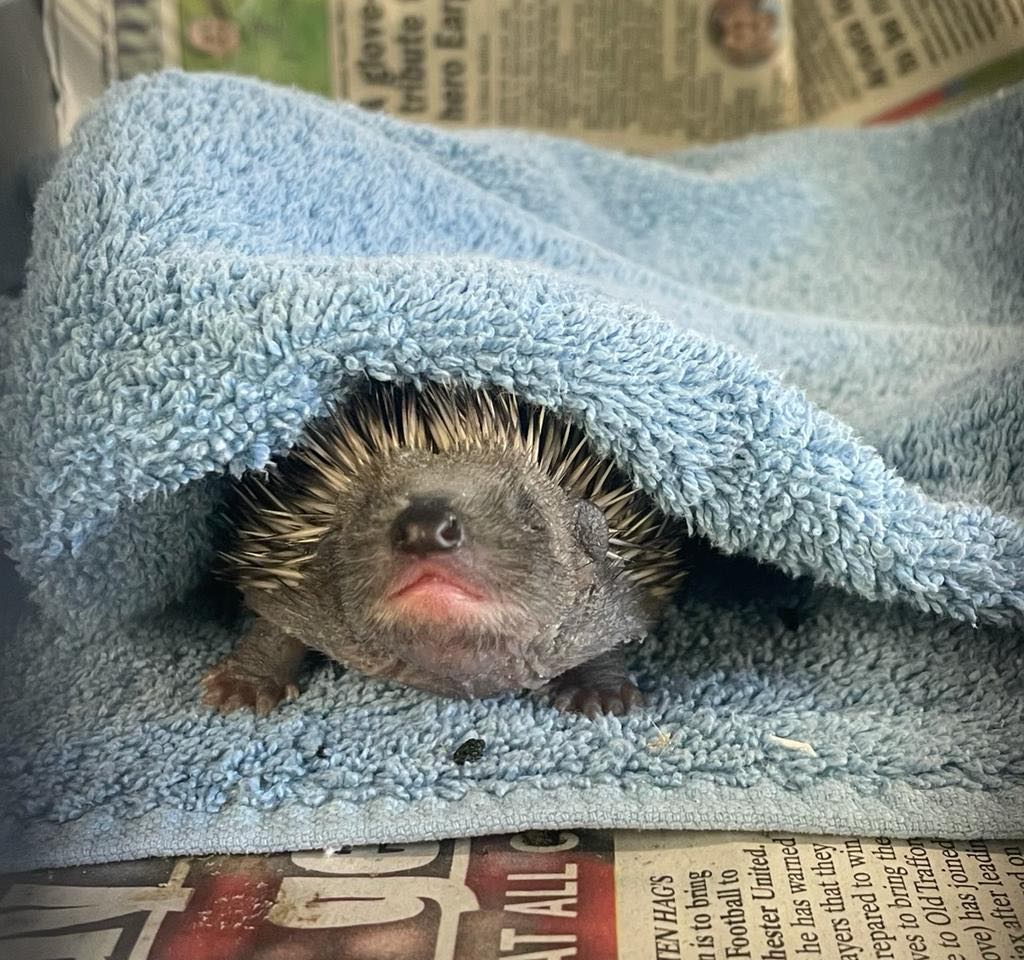
September has been a busy month for the wildlife team – more hedgehogs are being admitted every day, with 35 hedgehogs being admitted this month. The winter months are looming, but for now the team are continuing to release hedgehogs that are fit and healthy enough to thrive in the wild and hibernate over the winter – in total 20 hedgehogs were released in September.
Avian Influenza cases are still on the rise, and we can only presume that they are going to continue rising over the colder months. We are still, currently, admitting wild birds – however, only from the immediate area. We must take precautions to protect all of the birds onsite – it is a difficult and hard decision for the team when we have to say no, but we will always do our best to help any bird find another rehabber who can help save them.
If you would like to find out more about the current Avian Influenza outbreak, click here https://www.gov.uk/guidance/avian-influenza-bird-flu
Out and about in September
Hazelnuts are now ripening fast and wood mice are hoarding as many as they can. Empty shells with a neat circular hole chiselled in one end (the work of the lower incisors) and a few longer scrapes around the outside (where the upper incisors gripped the nut) are sure signs that they’re around.
Back in May and June, elder trees were smothered in cream-coloured, sweet-scented flowers. The blossom buzzed with all manner of insects, especially hoverflies and pollen beetles . Now the flowerheads pollinated in spring have become clusters of shiny berries. These often appear black, but are actually a dark purple.
Don’t be tempted to try a raw elderberry, at best they are unpalatable, at worst toxic. However, to a bird, they are irresistible! Currently, they are being devoured by starlings, woodpigeons, blackbirds, thrushes, robins, tits and warblers. Researchers have discovered that more species of bird feast on elderberries than any other native British fruit. Given elder is a compact tree, the blossom and fruit make it a brilliant addition to a wildlife garden.
By September, rough grass can be teeming with small mammals that move, unseen, at ground level. Some years in the UK, field voles are thought to outnumber humans, which suits the kestrels whose fortunes are tied up with those of the voles.
The birds may stay on familiar home turf all year, though others, in particular juveniles fledged over the summer, move to fresh hunting grounds in autumn, often by the coast.
Kestrels have an unrivalled ability to hang in mid-air, tilting their long tail from side to side, to keep their head perfectly still as they hover over a few square inches of grass. With great efficiency, they maintain a laser-like focus on their prey, before plunging for the kill. But their populations are also in freefall, due to a perfect storm of threats, including habitat loss.
A new study suggested a link between declining kestrel numbers and rodenticides. If landowners avoided using rat poison and allowed their marginal pieces of land to grow a little wilder, the kestrel population could recover.
Even a small garden can attract a variety of bees, butterflies and hoverflies well into September. As summer drifts into autumn, late-flowering plants such as red valerian, common knapweed, sedums, hebe, verbena and certain varieties of buddleia are ideal plants to include in your garden for pollinators.
The Romans are said to have brought a variety of new species to Britain including the rabbit, brown hare, carrot, stinging nettle, plum, walnut and sweet chestnut, for making chestnut flour to bake bread.
Sweet chestnut trees (related to beech, not horse chestnuts) don’t bear the autumnal spiny-cased fruit until well into their second decade.
Appearing in the grass almost overnight, with seemingly impossible symmetry, fairy rings have long been associated with superstition and magic since time immemorial. Confusingly, several abundant species of fungi create these circles, and most are pretty nondescript, with creamy, beige or pale brown caps.
Seen together like this, they remind us that fungi are sustained by huge underground networks of super-fine threads called hyphae. A ring forms when hyphae spread outwards, evenly, in all directions.
As opportunist omnivores, foxes don’t waste late summer and early autumn’s fruit bounty. They will happily feast on blackberries or reach up to eat low-hanging apples, pears and plums.
In September, adults and cubs have both nearly finished growing their new coats for winter, and the juveniles are close to adult size. Competition between young foxes, and between young and adults, can become fierce. The resulting scuffles may be noisy, with rivals chasing one another and squaring up on their hindlegs.
Rosehips, the red or orange fruit of the dog rose, were once widely gathered to make tea, syrup and jelly. During World War II, the Ministry of Food even ran a campaign promoting such harvesting to boost Vitamin C levels in a population deprived of fresh fruit imports. Foragers had to be careful of the vicious spikes on dog roses, technically not thorns but prickles. Thorns are modified stems emerging from buds, whereas prickles grow from a plant stem’s outer layer.
Did you Know…
the oldest living shark ever found is estimated to have lived for over 500 years.
A new-born kangaroo is the size of a grape.
Worker ants take over 250 power naps each day.
Polar bears have black skin.
Please remember to…
support wildlife at this time of the year by putting out food and especially water during dry weather to prevent wildlife suffering from dehydration.
Providing shallow saucers filled with water and small stones are ideal for insects to drink from.
Discarded plastic is now becoming more and more common on beaches and beauty spots, and family days out can involve a great deal of single-use plastic. Please consider bringing your own lunch and refreshments in reusable containers.
Please keep pets indoors during firework displays.
Please leave wild areas in gardens for hibernating hedgehogs and create log/leaf piles for over-wintering insects.
Please remove rubbish from your gardens or local area to prevent wildlife from injury.
Leave a ball in ponds to prevent freezing.
And Finally…
please remember to seek advice from the wildlife staff before bringing an animal to the rescue. If an animal is seriously injured, please take it to a vet as we don’t always have a vet on site. Vets rarely charge when treating wildlife.

Merchandise

Freshfields Lottery
